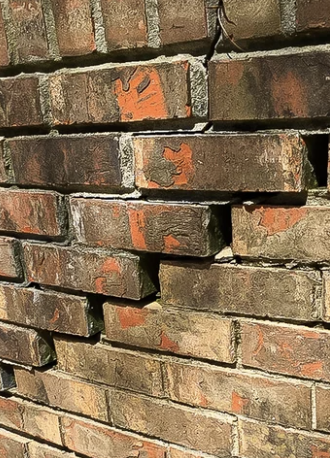
/
ABOUT THE CLAIM
One special type of commercial property claim for which Guardian Group is often called upon to provide forensic consultation are those pertaining to places of worship. Churches, for example, must carry property insurance, just like any other commercial buildings, and their claims must be investigated in the same fashion. On a recent claim involving a 6000 square foot structure, the insured had reported cracks on the exterior brick masonry wall.
ABOUT THE INVESTIGATION
Guardian’s engineer consulted local weather data sources prior to visiting the subject property. At the church, he completed thorough exterior and interior investigations, accompanied by a representative of church leadership. Observations that were noted and visually documented included:
• No broken windows, missing or displaced building materials, damaged vegetation, or impact marks on the exterior of the structure consistent with wind damage, or impact from windborne debris.
• On the addition (at the building’s rear), the North elevation window had cracks on the bottom and top right sides, and there was a separation gap at the left jamb of the window.
• At the East elevation of the addition, there was step cracking at the left top corner of the access door.
• At the interior, a vertical crack in the gypsum wall board above the window could be seen.
ABOUT THE CAUSE & ORIGIN REPORT
In addition to the previously mentioned gathering of the weather data, Guardian’s forensic engineer researched soil and flood data subsequent to the site inspection. Weather data revealed no major events and no (zero-point-zero) inches of precipitation at a nearby station on the date of loss. Flood data obtained through FEMA indicated the area was subject to flooding, with a 1% annual chance. Guardian reviewed soil information compiled by the U.S. Department of Agriculture – Natural Resources Conservation Services.
The pre-existence of the cracks was determined by the debris and spider webs discovered within the cracks. The soils were likely a contributing factor for the reported cracking and pointed to differential settlement as a root cause. Differential settlement is the uneven downward movement of the foundation of a building. Typical causes of differential settlements are: weak bearing soils, poor compaction, changes in the soil moisture content, drainage issue, etc. Per USDA-NRCS, the Church is approximately located at the transition between two types of soil, Blaney-Urban Land (AASHTO – American Association of State Highway and Transportation Officials, Rating A-2-4, granular material) and Johnston Loam (AASHTO Rating A-4, silt-clay material). The former is rated “Somewhat Limited” for the construction of dwellings and the latter is rated “Very Limited”. This means the soil has one or more features that are unfavorable for the specified use. The limitations generally cannot be overcome without major soil reclamation, special design, or expensive installation procedures. Poor performance and high maintenance can be expected.
ABOUT GUARDIAN GROUP
When complex, large, or otherwise high-risk property claims manifest, insurance carriers, TPAs, and adjusters turn to the forensic construction and engineering specialists at Guardian Group. Drawing upon over 30 years’ complex claims experience, Guardian’s property claim experts respond rapidly and report clearly so you can determine cause and origin, resolving your claims quickly and confidently. When your property claims transcend the everyday, call on experience. Call on a track record of efficient investigative performance. Kindly call on Guardian Group’s Property & Casualty Group today.
